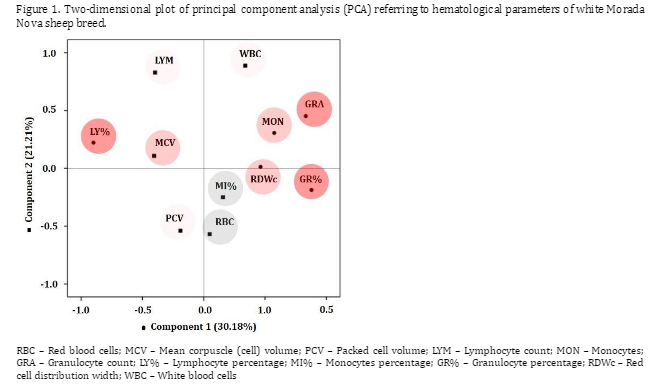General aspects of the production and management systems and their relationship with Corynebacterium pseudotuberculosis infection and occurrence of mastitis of white Morada Nova sheep herds in semi-arid region
DOI :
https://doi.org/10.21708/avb.2023.17.2.11377Résumé
This study aimed to characterize the production and management systems of white Morada Nova sheep herds and to present data on the occurrence of caseous lymphadenitis (CLA) and clinical mastitis (CM) in a population maintained in a semi-arid region. Blood samples were collected from adult females from herds of the Brazilian northeastern region. The first venous blood sample was used for a complete blood examination. The second blood sample was used to detect the presence of anti-C. pseudotuberculosis specific antibodies. The production and management systems of the herds were characterized using questionnaires, divided into three blocks of indicators: Facilities; Characterization of the production system; Health management. Body weight and hematological results were submitted to an analysis of variance, on which the fixed effect was clinical diagnosis, and the principal component analysis was performed to determine the main variables. For CLA, three herds stood out as having the highest rates of seropositivity (85.71, 79.41 and 60.45%). The same herds also had the highest occurrences of CM (9.30, 8.82 and 5.71%). The main variables that showed differences according the diagnosis of both diseases were blood granulocytes and lymphocytes. The study made it possible to observe the relationship between the best sanitary practices and the lowest occurrence rates of both CLA and CM. The diseases present considerable occurrence in sheep populations.
Téléchargements

Téléchargements
Publié-e
Numéro
Rubrique
Licence
(c) Tous droits réservés Acta Veterinaria Brasilica 2023

Cette œuvre est sous licence Creative Commons Attribution 4.0 International.
Autores que publicam na Acta Veterinaria Brasilica concordam com os seguintes termos: a) Autores mantém os direitos autorais e concedem à revista o direito de primeira publicação, com o trabalho simultaneamente licenciado sob a Licença Creative Commons Attribution que permite o compartilhamento do trabalho com reconhecimento da autoria e publicação inicial nesta revista. b) Autores têm autorização para assumir contratos adicionais separadamente, para distribuição não-exclusiva da versão do trabalho publicada nesta revista (ex.: publicar em repositório institucional ou como capítulo de livro), com reconhecimento de autoria e publicação inicial nesta revista. c) Autores têm permissão e são estimulados a publicar e distribuir seu trabalho online (ex.: em repositórios institucionais ou na sua página pessoal) a qualquer ponto antes ou durante o processo editorial, já que isso pode gerar alterações produtivas, bem como aumentar o impacto e a citação do trabalho publicado (Veja O Efeito do Acesso Livre).


 Esta obra está licenciada com uma Licença
Esta obra está licenciada com uma Licença 